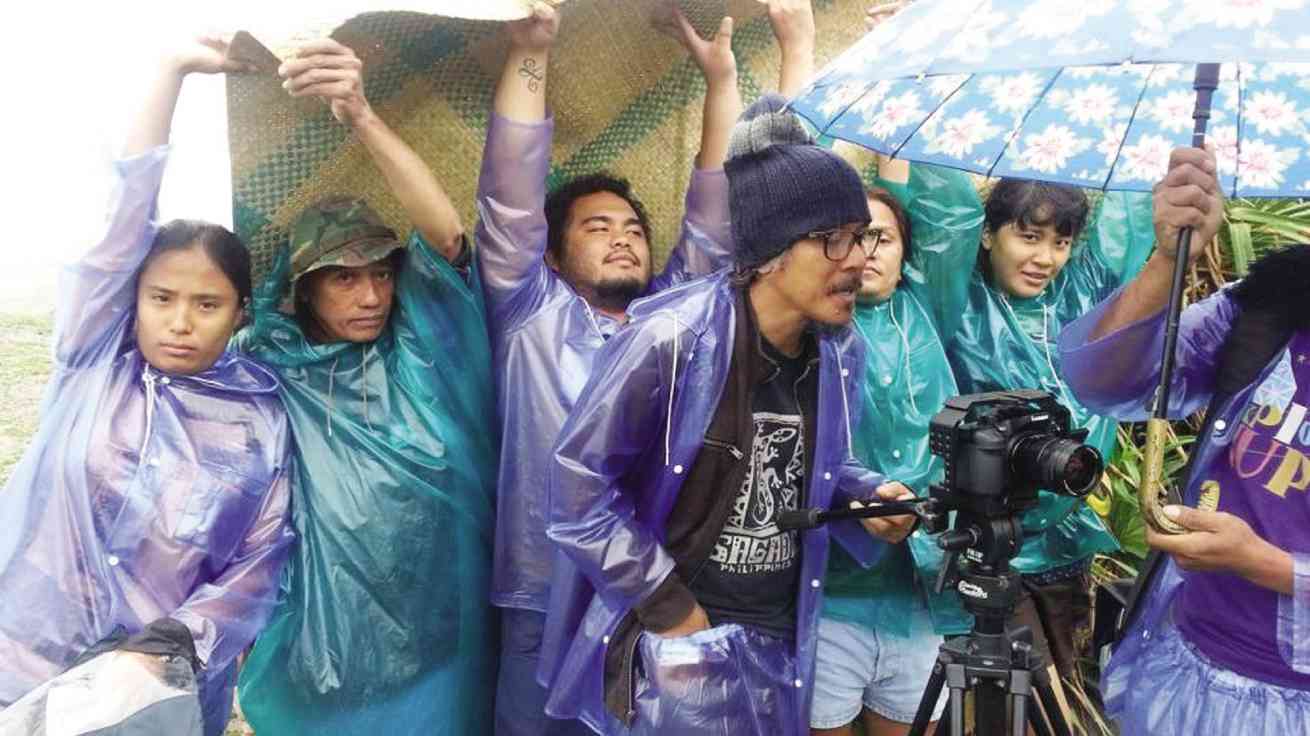Lav’s Locarno winner screens Sunday

LAV TEAM. Lav Diaz and his crew defied the elements during the shoot of “Mula sa Kung Ano ang Noon,” which will have a special screening today at SM MoA.
Filipinos will finally find out why foreign critics are raving over Lav Diaz’s Locarno winner, “Mula sa Kung Ano ang Noon,” which will have a special screening dubbed “Handog sa Bansa,” set today (Sunday), 2:30 p.m., at the Centerstage of SM Mall of Asia.
Apart from the Locarno jurors, international critics were unanimous in praising the Pinoy auteur’s latest five-and-a-half-hour epic.
‘Exceptional’
“Mula sa Kung Ano” won the Golden Leopard (Best Picture) trophy, plus three prizes from different critics’ groups at the 67th Locarno International Film Festival in August: Fipresci International Film Critics’ Prize, the Junior Jury’s Environment is Quality of Life Prize and the International Federation of Film Societies’ (IFFS) Don Quixote Prize.
The Fipresci citation said Diaz’s film won because of “outstanding cinematographic achievement in storytelling and its impressive visual and narrative style that is unique and exceptional.”
Article continues after this advertisementMartin Macalintal, audiovisual attaché of the French embassy, translated the Junior Jury citation: “The film represents… the relationship of the country’s cultural, social and historical aspects… through a cinema that’s both delicate and brutal… a profound film… its rhythm and meditative photography describe in a magisterial manner the anxiety and fear of the characters.”
Article continues after this advertisementThe IFFS citation commended Diaz’s film as an “outstanding effort to investigate the uniqueness of personal stories alongside the collective dimensions of a nation’s history… Ambitious in form and content, [it] exemplifies the spirit of innovation that defines the Locarno film fest.”
On the festival website, five critics singled out Diaz’s film as their “favorite”— Emanuele Sacchi of MyMovies.it, Tereza Fischer of Filmbulletin, Antonio Mariotti of Corriere del Ticino, Ugo Brusaporco of La Regione and Stéphane Gobbo of L’Hebdo.
(The reviews of these Italian and Swiss critics were translated for the Inquirer by Emanuela Adesini, cultural attaché of the Italian Embassy in Manila.)
Said Sacchi: “Diaz’s cinema is everlasting, unstoppable [but] each frame is essential.” Fischer was “fascinated by this five-hour visual experience, which slowly develops an atmosphere in which you feel something that you cannot properly identify.”
Childhood memories
Mariotti remarked: “It is not a film. It is a visual and emotional experience that you’ll never forget. A journey through space and time… true cinema.”
Brusaporco agreed: “It’s the [kind of] cinema that commercial movies and the TV [industry] have forgotten. Diaz is a great visual storyteller… his [filmic] language is intense and clean, each image is imprinted on the [collective] memory.”
Variety’s Justin Chang saw “Mula sa Kung Ano” at the Toronto fest recently and hailed it as “hauntingly beautiful… a work of historical reclamation… a Southeast Asian companion piece to Michael Haneke’s ‘The White Ribbon.’”
Inspired by Diaz’s childhood memories in Maguindanao, “Mula sa Kung Ano” follows disparate, desperate characters living in a remote village on the verge of collapse during the Marcos years.